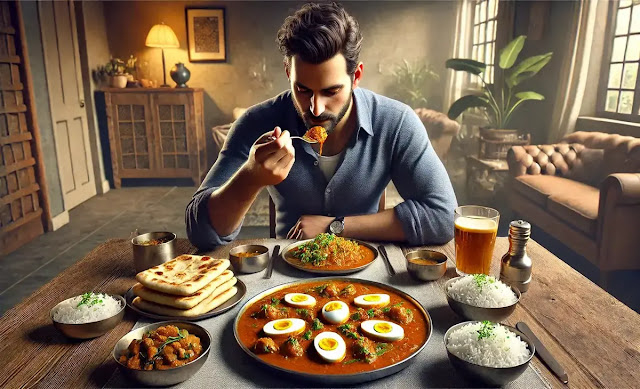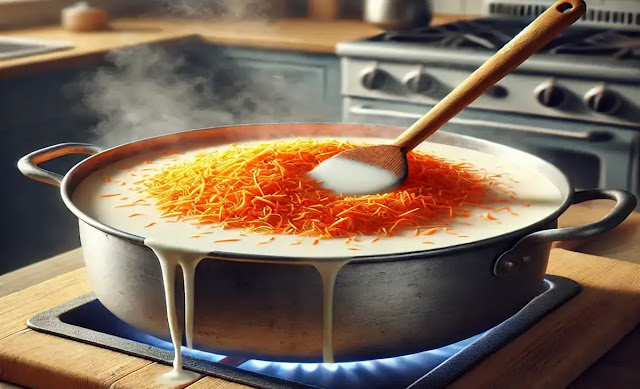Saag Paneer is a classic North Indian dish made with pureed spinach (saag) and soft paneer (Indian cottage cheese), infused with aromatic spices. This comforting and nutrient-rich dish pairs beautifully with naan, roti, or jeera rice.
Ingredients
For the Saag (Spinach Gravy)
- 2 bunches fresh spinach (palak), washed and chopped
- 1/2 cup fenugreek leaves (methi) (optional)
- 2 green chilies
- 2 tbsp ghee or oil
- 1 tsp cumin seeds
- 1 onion, finely chopped
- 4 garlic cloves, minced
- 1-inch ginger, minced
- 1 tomato, finely chopped
- 1/2 tsp turmeric powder
- 1 tsp coriander powder
- 1/2 tsp garam masala
- 1/2 cup water (adjust as needed)
- Salt to taste
- 2 tbsp fresh cream (optional, for richness)
For the Paneer
- 200g paneer, cut into cubes
- 1 tbsp ghee or butter
- 1/4 tsp salt
- 1/4 tsp red chili powder
Step-by-Step Cooking Method
Step 1: Blanching the Spinach
- Boil water in a deep pot and add the chopped spinach and fenugreek leaves.
- Let them cook for 2-3 minutes until wilted.
- Immediately transfer to ice-cold water to retain the green color.
- Blend into a smooth puree using a little water and keep it aside.
Step 2: Preparing the Paneer
- Heat 1 tbsp ghee or butter in a pan.
- Add paneer cubes, sprinkle a pinch of salt and red chili powder, and lightly sauté until golden brown.
- Remove and keep aside.
Step 3: Making the Saag Base
- Heat ghee or oil in a pan, add cumin seeds and let them splutter.
- Add chopped onions and sauté until golden.
- Stir in ginger, garlic, and green chilies, and cook until fragrant.
- Add chopped tomatoes and cook until soft.
- Mix in turmeric, coriander powder, and salt; cook for a minute.
Step 4: Combining the Saag and Paneer
- Pour the spinach puree into the pan and stir well.
- Add water as needed to adjust the consistency.
- Let it simmer for 5 minutes, then add garam masala and cream.
- Gently mix in the sautéed paneer cubes and cook for another 2 minutes.
Step 5: Garnishing and Serving
- Garnish with fresh cream or butter for a rich finish.
- Serve hot with naan, roti, or jeera rice.
(FAQ's)
1. Can I use frozen spinach?
Yes! Thaw it first, squeeze out excess water, and blend.
2. How do I make it vegan?
Replace paneer with tofu and use coconut milk instead of cream.
3. Why is my saag paneer not bright green?
Make sure to blanch the spinach and immediately transfer it to ice water to lock in the vibrant color.
4. Can I make it ahead of time?
Yes! Store in the fridge for 2-3 days and reheat before serving.





.jpg)












.jpg)
.jpg)





.jpg)
%20(1).jpg)
.jpg)
.jpg)







.png)
